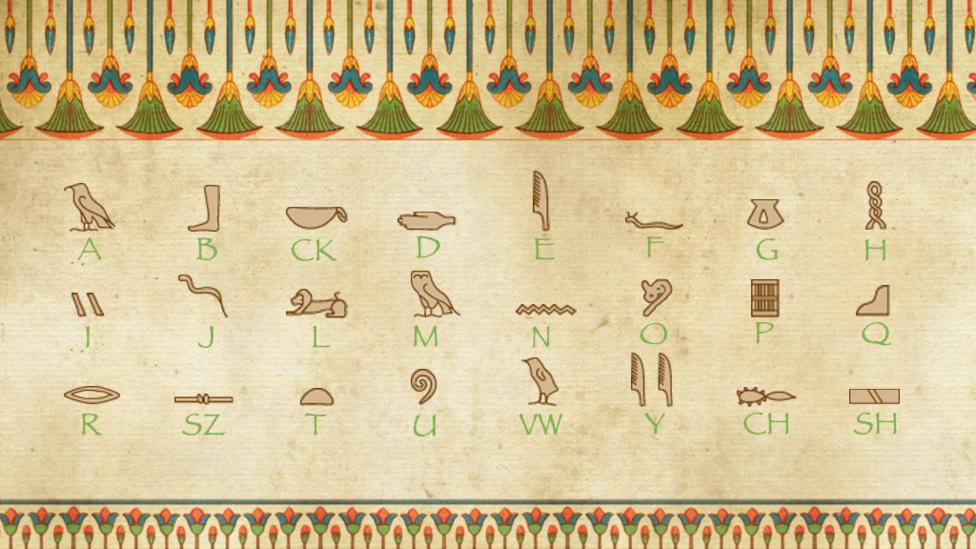To write your name in hieroglyphics is to give it history, power, and beauty. It’s more than a translation—it’s a transformation. Whether for learning, art, fashion, or fun, this ancient practice continues to fascinate people across the globe.


Post Introduction
To write your name in hieroglyphics is to give it history, power, and beauty. It’s more than a translation—it’s a transformation. Whether for learning, art, fashion, or fun, this ancient practice continues to fascinate people across the globe.
Post Content
Ever wondered how your name would look in the majestic script of ancient Egypt? With over 700 unique symbols, Egyptian hieroglyphics are one of the world’s oldest and most fascinating writing systems. Used by pharaohs, scribes, and temple priests, these pictorial characters weren’t just a way to record language—they were sacred, artistic expressions of identity and power closely tied to ancient Egyptian papyrus art.
Today, more and more people are exploring how to write their name in hieroglyphics, blending curiosity, culture, and creativity. Whether you're visiting Egypt, creating personalized souvenirs, or simply interested in ancient civilizations, converting your name into hieroglyphs is an exciting journey back in time.
🔹Get some information And Read About Abdeen Palace
Egyptian hieroglyphs are symbols that represent sounds, objects, ideas, or groups of sounds. Unlike modern alphabets, each hieroglyph carries visual meaning. For example, an owl represents the sound "M", while a reed leaf stands for "I" or "Y". Some hieroglyphs stand for whole words, while others act like letters.
The ancient Egyptians believed that writing had divine power. That’s why they carved hieroglyphs into tombs, temples, and scrolls—to preserve memory, protect spirits, and tell stories that would last forever, especially within sacred spaces such as Karnak Temple.
🔹Get some information And Read About Cairo Tower
Step 1: Break Your Name into Phonetic Sounds
Unlike English, ancient Egyptian writing focuses on consonant sounds. Vowels weren’t written as clearly, so your name might be represented by a simplified phonetic version. For example:
“Sarah” becomes S-R-H
“Michael” becomes M-K-L
“Emily” becomes M-L-Y
Step 2: Match Sounds to Hieroglyphs
Each consonant has its own hieroglyph. Some of the most common include:
A = Vulture
B = Foot
D = Hand
H = Reed Shelter
K = Basket with Handle
M = Owl
N = Water Ripple
R = Mouth
S = Folded Cloth
T = Bread Loaf
Y = Reed Leaf
🔹Get some information And Read About the Hanging Church
Step 3: Arrange the Symbols
Ancient Egyptian writing can be horizontal or vertical, and it can read left-to-right or right-to-left, depending on the direction the characters face. For names, it’s common to arrange them horizontally for ease, similar to inscriptions found inside royal cartouches in sites like the Valley of the Kings.
Write your name in hieroglyphics and you'll immediately feel a stronger connection to the mystery and magic of ancient Egypt. Whether used for tattoos, artwork, jewelry, or educational purposes, your name becomes more than a word—it becomes a story carved in time, much like inscriptions preserved at Saqqara.
It’s also a powerful classroom tool. Teachers and students alike use name translation to introduce history, language, and symbolism in an interactive way. Museum gift shops and cultural exhibits across Egypt, including the Egyptian Museum of Cairo, highlight hieroglyphs as living heritage.
One of the most popular uses of hieroglyphic name writing today is personalized gifts. From custom cartouche pendants to wall art and bookmarks, seeing your name rendered in ancient symbols adds a sense of prestige and timelessness.
Many also choose to get hieroglyphic tattoos, using the script to commemorate a loved one or embrace spiritual meaning inspired by deities depicted in reliefs at temples such as the Temple of Horus.
Today’s technology makes ancient writing more accessible than ever. You can find dozens of hieroglyphic translators online, many of which are free and easy to use. Educational resources inspired by collections from the Grand Egyptian Museum help bridge the gap between ancient scripts and modern learners.
Writing your name in hieroglyphics isn't just about translation—it’s about understanding how ancient Egyptians viewed the power of names. A name was seen as a sacred part of the soul. Pharaohs had multiple names, each representing different aspects of their divine and human identity.
Names were often inscribed inside cartouches, oval shapes that symbolized protection, a tradition seen on monuments from Luxor to Aswan and often explored during immersive journeys like the 8 Days Egypt Luxury Tour.
Can anyone write their name in hieroglyphics?
Yes! It’s a fun and educational way to engage with ancient Egyptian culture.
Are hieroglyphics still used today?
While no longer a living language, hieroglyphics remain central to art, museums, and education.
What’s the difference between hieroglyphs and modern alphabets?
Hieroglyphs are pictorial and symbolic, unlike abstract modern letters.
Can I put my hieroglyphic name in a cartouche?
Absolutely. Cartouches are the traditional way to frame names.
To write your name in hieroglyphics is to give it history, power, and beauty. Whether you encounter these symbols in temples, museums, or while sailing the Nile on a 3 nights Nile Cruise, the experience connects you directly to one of the world’s most enduring civilizations. Take a step into the past, spell your name like a pharaoh, and let the symbols of Egypt tell your unique story.